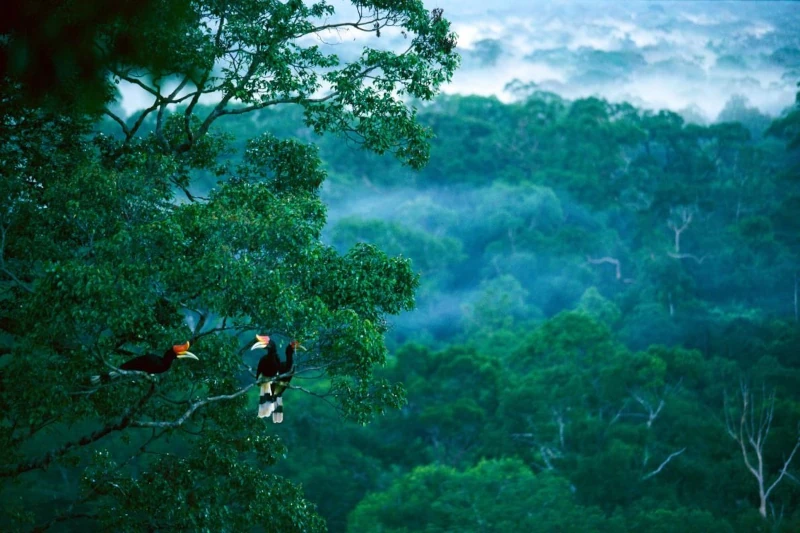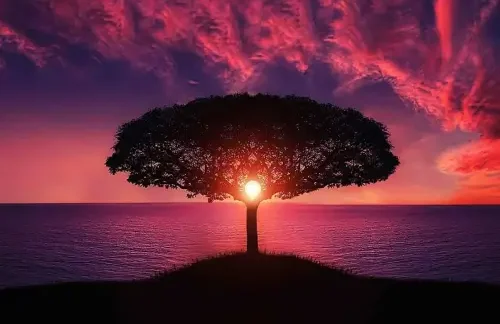Tropical Forests: Why They Matter for Climate, Life, and Culture
The importance of tropical forests cannot be overstated. Often referred to as the “lungs of the Earth,” these dense, vibrant ecosystems play a vital role in regulating the planet’s climate, sustaining biodiversity, and supporting the livelihoods of millions of people. Located primarily near the equator, tropical forests are found in regions such as the Amazon Basin in South America, the Congo Basin in Africa, and Southeast Asia.
Understanding the importance of tropical forests is the first step toward global sustainability.
Despite covering less than 7% of the Earth’s land surface, tropical forests house more than half of all known species. Their role in absorbing carbon dioxide, producing oxygen, and stabilizing weather patterns makes them critical to global ecological balance. Yet, they are under increasing threat from deforestation, mining, agriculture, and climate change — making this topic more urgent than ever.
Climate Regulation and Carbon Storage
One of the most crucial functions of tropical forests is their ability to regulate climate. Through photosynthesis, trees absorb carbon dioxide and release oxygen, significantly reducing the concentration of greenhouse gases in the atmosphere. It’s estimated that the Amazon alone contributes around 20% of the world’s oxygen and stores billions of tons of carbon in its vegetation and soil.
Without tropical forests, the acceleration of climate change would be even more catastrophic. They act as natural carbon sinks — absorbing more carbon than they emit — and help prevent global temperatures from rising beyond critical thresholds.
Biodiversity Hotspots
Tropical forests are the most biologically diverse ecosystems on the planet. From jaguars and toucans to rare orchids and fungi, they host an astonishing variety of life. Many species found in tropical rainforests exist nowhere else on Earth. Scientists estimate that thousands of plant and animal species remain undiscovered in these forests.
These species are not just important ecologically — they also provide potential for medical and scientific breakthroughs. Countless pharmaceuticals, including treatments for cancer, malaria, and infections, have been developed from rainforest plants.

Support for Indigenous Communities
Millions of indigenous people live in tropical forests and rely on them for food, medicine, water, and shelter. These communities have cultivated deep knowledge of their environment and developed sustainable practices that preserve the balance of their ecosystems.
For many, the forest is more than a home — it is sacred. Their languages, spiritual beliefs, and cultural identities are deeply intertwined with the natural world around them. Protecting tropical forests also means defending the rights and wisdom of these communities.
Threats to Tropical Forests
Despite their value, tropical forests are disappearing at an alarming rate. Every minute, an area equivalent to 40 football fields is lost due to: – Large-scale agriculture (e.g., palm oil, soy, cattle) – Illegal logging and mining – Infrastructure development – Fires exacerbated by drought and climate change
Deforestation not only leads to biodiversity loss and carbon emissions — it also disrupts water cycles, displaces communities, and increases the risk of zoonotic diseases.

Why It Matters to Everyone
Even if you live far from a rainforest, your life is still affected by its health. Tropical forests influence rainfall patterns across continents, stabilize coastlines, and provide ingredients for everyday products — from coffee and chocolate to medicine and cosmetics.
The loss of these forests could mean more extreme weather, disrupted agriculture, and diminished natural resources globally. That’s why understanding and acting on their importance is not just the responsibility of conservationists — it’s a global imperative.
In the following sections, we will explore in greater depth how tropical forests influence global stability, what is being done to protect them, and how each of us can play a role in preserving these magnificent ecosystems.
The Importance of Tropical Forests for Climate, Culture, and Economy
Tropical forests are more than green landscapes — they are vast, intricate ecosystems that support the health of the entire planet. From climate control to cultural identity, their benefits span far beyond their geographic borders. Let’s explore the many dimensions of their importance.
1. Climate Control and Carbon Sequestration
One of the most urgent environmental issues today is climate change — and tropical forests are a powerful defense mechanism. These forests act as massive carbon sinks, absorbing more CO₂ than they emit and storing it in tree trunks, roots, and soils.
When forests are cut or burned, not only is this storage lost, but the carbon is released back into the atmosphere, intensifying global warming. According to the World Resources Institute, tropical deforestation accounts for approximately 10% of global carbon emissions.

2. Regulating the Global Water Cycle
Through a process called transpiration, trees release water vapor into the atmosphere, contributing to cloud formation and rainfall. This doesn’t just affect the local ecosystem — it influences precipitation patterns on a global scale.
For example, the Amazon helps produce rain not just in South America, but also in the Midwest United States. Losing forest cover disrupts this cycle, leading to droughts, desertification, and changes in freshwater availability worldwide.
One more reason behind the importance of tropical forests is their ability to regulate rainfall across continents.
3. Biodiversity Strongholds
Tropical forests are home to over 50% of all plant and animal species on Earth. This biodiversity ensures ecological resilience, enabling ecosystems to recover from disruption and continue functioning.
Every species, from the tiniest insect to the tallest tree, plays a role in the health of the forest. Many of these organisms also offer genetic resources valuable to agriculture, pharmaceuticals, and climate adaptation science.
4. Medical Discoveries and Natural Pharmacy
Some of the world’s most powerful medicines have been discovered in rainforest plants. For instance, quinine (for malaria), vincristine (used in chemotherapy), and hundreds of antibiotic compounds have their roots in tropical forests.
Experts believe that we’ve barely scratched the surface of the medicinal potential hidden in these ecosystems. As forests vanish, so do undiscovered cures and treatments for future diseases.
5. Indigenous Knowledge and Cultural Heritage
For indigenous communities, tropical forests are not just a resource — they are home, teacher, and sacred space. These communities have developed intricate systems of knowledge about flora, fauna, seasons, and forest management.
Protecting these forests helps preserve ancient cultures and languages, many of which are deeply tied to forest life. When forests are destroyed, not only are people displaced — entire ways of understanding the world disappear.
6. Economic Benefits Through Sustainable Use
Forests provide timber, fruits, oils, herbs, and countless other resources that contribute to local and global economies. However, sustainable harvesting practices are key to maintaining these benefits without causing irreversible damage.
Eco-tourism is another avenue that generates income while promoting conservation. Visitors who hike, photograph wildlife, or learn from local guides help bring revenue to forest communities — while spreading awareness of the forest’s value.
7. Prevention of Natural Disasters
Trees stabilize soil with their roots, reducing the risk of landslides and erosion. Forests also act as buffers during floods, absorbing excess rainfall and slowing the flow of water. In coastal regions, mangroves — a type of tropical forest — help protect shorelines from storm surges and tsunamis.
Removing forests increases the risk of catastrophic natural events, which disproportionately affect vulnerable populations. By preserving tree cover, we also preserve community safety and long-term resilience.
8. Forest Loss and Emerging Diseases
Deforestation increases human-wildlife interaction, raising the risk of disease spillover from animals to humans. Many scientists link tropical forest destruction to the rise in zoonotic diseases — illnesses transmitted from animals to people.
Preserving forests is a form of pandemic prevention. Healthy forests act as barriers, maintaining a balance that limits the spread of infectious diseases from wild species to humans.
9. Forest Restoration and Global Solutions
While deforestation is a crisis, it is not irreversible. Reforestation and afforestation initiatives around the world are restoring degraded land and bringing back tree cover. Projects like the Bonn Challenge and the Great Green Wall in Africa aim to plant billions of trees and restore millions of hectares of land.
Technology is also helping: satellite monitoring, drone mapping, and carbon credit systems enable better forest management. These innovations, when paired with political will and community engagement, can slow — and even reverse — forest loss.
10. What You Can Do
Even small lifestyle changes can support tropical forests: – Reduce consumption of products linked to deforestation (like palm oil or unsustainable beef) – Support certified sustainable products (look for FSC or Rainforest Alliance labels) – Donate to rainforest conservation organizations – Raise awareness through education and advocacy
Whether you live near a forest or in a distant city, your choices ripple across ecosystems. The fate of tropical forests is not just in the hands of governments — it’s in all of ours.
Tropical Forests—A Global Responsibility
After exploring the many layers of the importance of tropical forests, one message echoes louder than ever: these forests are not a distant concern — they are essential to life on Earth. Whether through oxygen production, carbon storage, or cultural preservation, tropical forests serve humanity in ways we are only beginning to fully understand.
The True Cost of Deforestation
When a forest is cut down, what’s lost isn’t just trees. We lose medicine that hasn’t been discovered yet, species that can’t be found anywhere else, and weather patterns that nourish crops half a world away. We also lose part of our planet’s ability to regulate itself — a dangerous gamble in a time of accelerating climate change.
Deforestation affects everyone. The air we breathe, the food we grow, and the water we drink are all tied to the fate of the forests. Their destruction is a global crisis, not just a regional issue.
Learning from Forest Guardians
Indigenous communities have long understood how to live in balance with tropical forests. Their knowledge systems, developed over millennia, are rooted in respect and reciprocity — take only what you need, and give back more than you take. These values stand in stark contrast to extractive industries driven by short-term profits.
If we want to preserve these ecosystems, we must listen to those who have protected them longest. Supporting indigenous land rights and leadership in conservation is not just fair — it’s effective.
Hope Through Action
While the threats to tropical forests are serious, there is also reason for hope. Around the world, reforestation projects are growing trees and rebuilding ecosystems. Citizens are pushing governments to act. Technologies are helping monitor and manage forest health. Businesses are adopting sustainability commitments. These actions show that change is possible — and already underway.
And we, as individuals, are not powerless. Every time we choose sustainable products, reduce waste, or support conservation efforts, we cast a vote for the future of tropical forests. We don’t need to live in the Amazon to care — or to make a difference.
A Living Legacy Worth Protecting
Forests are among Earth’s most ancient living systems. They existed long before humans and, with our care, can outlive us to serve future generations. They are our inheritance — and our legacy.
Imagine a future where our grandchildren walk beneath trees we helped protect. Where medicine is found in leaves we saved. Where rainfall nourishes the land because we said no to reckless deforestation. That future starts with awareness — and moves forward through action.
Let us treat tropical forests not as commodities, but as sacred commons. Let us see them not just as scenery, but as life-support systems. Let us be the generation that turned the tide — that stood tall like the trees we saved.







